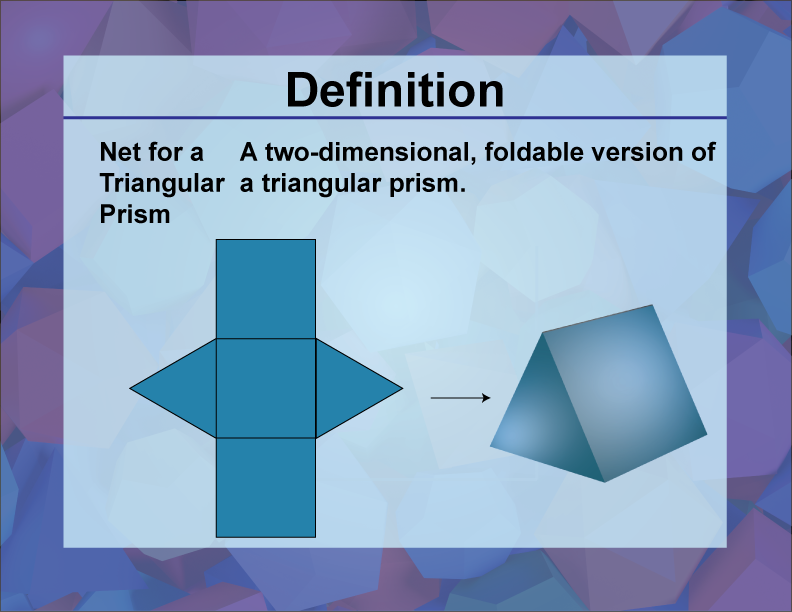
Display Title
Definition | 3D Geometry Concepts | Net for a Triangular Prism
Display Title
Net for a Triangular Prism

Topic
3D Geometry
Definition
A net for a triangular prism is a two-dimensional figure that can be folded to form the surface of a three-dimensional triangular prism.
Description
In the context of three-dimensional geometry, a net is a crucial concept for understanding the surface area and structure of 3D shapes. Specifically, the net for a triangular prism consists of two triangular faces and three rectangular faces. When these faces are arranged in a specific two-dimensional pattern, they can be folded along the edges to form a triangular prism.
Understanding the net of a triangular prism is fundamental for various applications in geometry, such as calculating the surface area and visualizing the shape in a flattened form. This visualization helps in comprehending how the faces of the prism are connected and how they interact with each other. For instance, in educational settings, students often use nets to gain a deeper understanding of the properties of 3D shapes and to develop spatial reasoning skills.
Furthermore, nets are used in practical applications, such as packaging design, where a three-dimensional object needs to be constructed from a flat sheet of material. By studying the net of a triangular prism, one can determine the amount of material required and the most efficient way to cut and fold it to create the desired shape.
For a complete collection of terms related to 3D geometry click on this link: 3D Collection.
| Common Core Standards | CCSS.MATH.CONTENT.5.MD.C.3 |
|---|---|
| Grade Range | 4 - 6 |
| Curriculum Nodes |
Geometry • 3D Geometry • Triangular Prisms |
| Copyright Year | 2021 |
| Keywords | three-dimensional geometry, 3d Geometry, defnitions, glossary term |